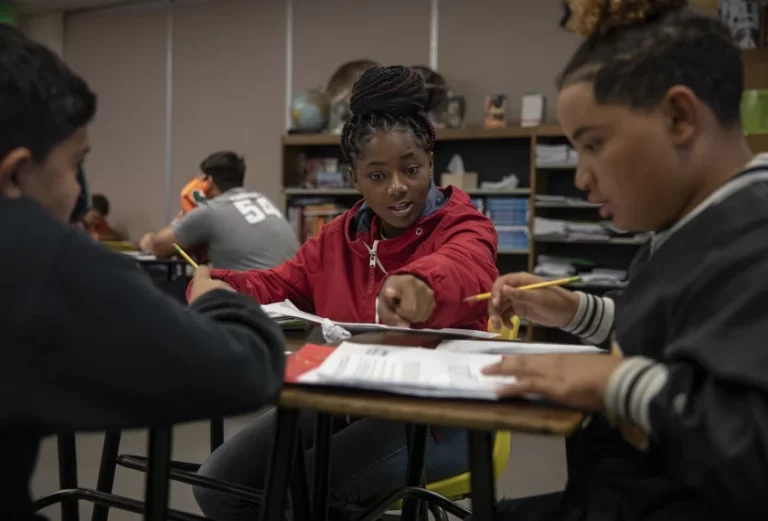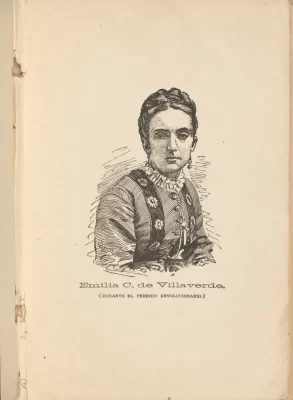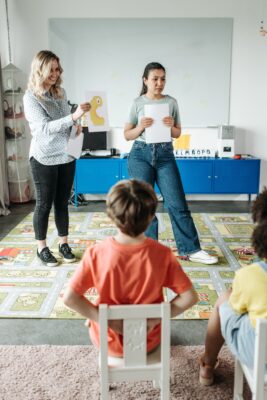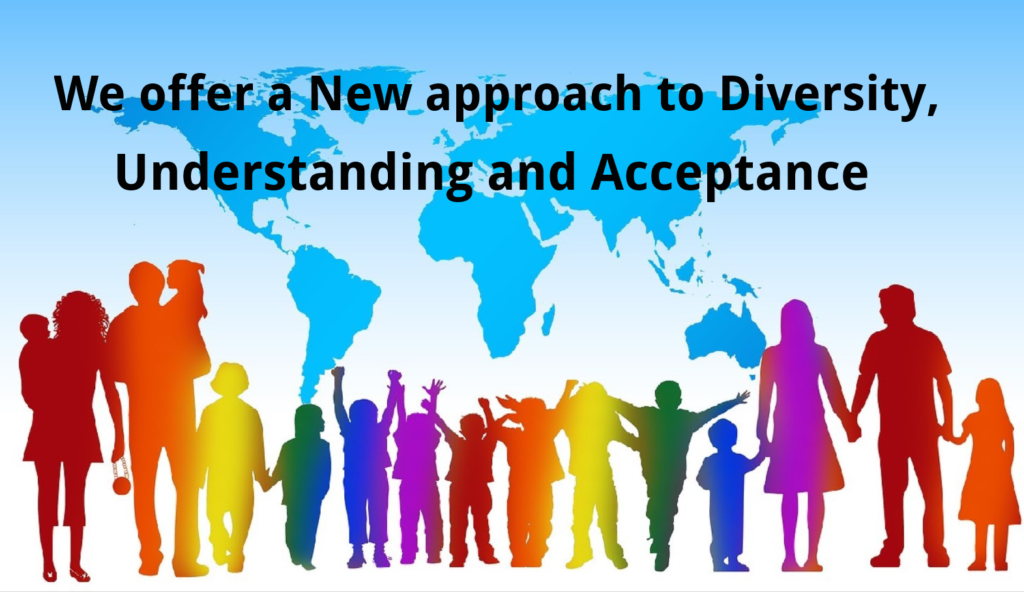Guide to The Pathways Programs
This is the blueprint for establishing The Pathways Programs in your schools. We will review some important aspects of the organization and then present a plan of action to begin the process. The Executive Program Manager is available to help you with whatever you need. National can supply initial funding to get things started. We look forward to working with you and hope you enjoy the time you spend helping your community.
Editor’s Note on Definitions: We use some terms in a different way than you will find in the dictionary because it helps convey our message in a more concise way, see the Definitions Page. For example, when we use Students-of-a-Difference or Students-of-Diversity, we mean “all students”, that includes all races, ethnicities, religions, genders, sexual orientations, and cultures. In short Everyone! It’s easier than making a list each time.
Teacher’s Note: Many of the sections in the Pathways Programs are for the benefit of our members, parents and students, because they should understand the process of education. As teachers, you already know what to do and don’t need to go into the details that we explain.

The word educate comes from Latin, meaning “to bring up, to rise, and to nourish, to train.” To educate is an active enterprise.
We want to be Educators
- Be Proactive, make things happen – lead the discussion with passion and energy because these people gave so much of themselves and accomplished so much, they are amazing!
- Be Interactive with the students offering two-way conversations of viewpoints and concepts.
- Be Reactive to their thoughts and ideas, don’t just “tell” them what to think, lead them to think for themselves.
Pathways are in-class programs that seek to build a sense of pride to and respect between students in a non-intrusive way that we call Pride and Respect by Association. We keep each BIO and Story short and to the point, so students learn quickly and do not get bored. We offer additional sources of information so the teacher can expend the assignment, or the student can do more research if they want to learn more. The programs are engineered to require minimal time and effort for the teacher, while developing a feeling of acceptance between the students. “When students from all backgrounds, particularly historically marginalized ones, see their culture represented in curricula and feel a sense of belonging, their educational experience improves.” This is an example of Pride and Respect by Association. From an article in Education Week (9/26/2022).
In “Stories That Inspire” we find accounts of remarkable people who contributed to their town or community in significant ways, but never had a chance to tell their tale, or haven’t received the recognition they deserve. Perhaps some new and significant aspects of their story were recently discovered, or new details have come to light and are now available. Sometimes it’s a friend or relative that will bring the story to our attention because the person is no longer alive or incapable of telling their own story. It could be a single occurrence that made the lives of everyone better or that influenced just one person in a profound way. Maybe this is a current event or one that happened 100 years ago, but it still has meaning today. These stories are meant to bring a sense of pride to students who share the same heritage, race, or religion as the subject, while bringing respect from other students. We call this Pride and Respect by Association.

Perhaps there was a coach or another player who made an impact upon your life and if their story is told it will inspire others. Maybe they don’t even know how important they were in your life – now is your chance to let them know. This can be your gift to them.
The Biography Catalog consists of short biographies (BIOs) of people (Subjects) who may not be well know, but have impacted the course of history in a positive way through their advancements. We believe through association, students of a similar heritage will increase pride in themselves, while the other students will gain respect towards their fellow students. The BIOs database is easily accessed by heritage, race, religion, and other traits so the teacher and students can easily find people they are interested in.
Pride and Respect by Association: Think of how we feel when our home team wins a ball game or watching a successful space launch for a lunar landing. We feel pride, just as if we were part of the event. Fans of the other team might not be happy, but they will respect us the next time. Noticed the term “us” was used. We become emotionally part of the team, and take pride just being a fan. That’s Pride and Respect by Association.
A Sample Suggestion for The Biography Catalog
In Time Magazine, 3/6/2020; Portrait of Emilia Casanova de Villaverde, 1874. The New York Public Library
Emilia Casanova de Villaverde is known as a patriot in Cuba, but lived most of her life in New York City. An ardent abolitionist and activist leader, she supported Cuba’s independence from Spain during the last half of the 19th century. As the Ten Years’ War (1868-1878) raged in Cuba, she formed the first women’s club, La Liga de las Hijas de Cuba, to raise funds and sustain the elderly, the widows and orphans who took refuge from the war in New York. She addressed the Congress of the United States about Cuba’s situation, and on several occasions personally sought the aid of President Ulysses S. Grant.
From her baronial coastal mansion in the South Bronx, where a network of vaults concealed the crates of munitions Emilia collected for the liberation army, she organized numerous clandestine expeditions to Cuba.

Portrait of Emilia Casanova de Villaverde, 1874.
Denounced in the conservative press, ridiculed in political cartoons, and burned in effigy in her hometown, she continued to form women’s clubs for the cause until her death in 1897 — the year before the Spanish-Cuban-American War would change the course of history for Cuba and Puerto Rico.
Stories That Inspire:
If you would like to submit a story, please read these helpful suggestions first and then use the Suggestions for Story’s that Inspire form.
Keep in mind the age bracket you are writing for: we suggest 6-10 and 11+. Stories should be simple, positive, easily comprehensible and something the students will find interesting. For younger students use appropriate words.
What makes a story inspirational? Most inspirational writings involve telling a story that others can relate to because it is honest and from the heart. State your message near the beginning in simple terms, be short and concise, and include your feelings not just the facts. How did the event influence you personally? You can ask others what they thought about the subject, and add their impressions to gain another perspective.
When it comes to creating the story first think about what the students will find meaningful and interesting. Many people have fantastic life experiences they want to share, and this is your chance to help them. Remember these are stories to inspire – not to brag or to shock anyone. These are accounts of remarkable people or events that have contributed to their town or community in significant and positive ways. The person might be a relative that lived a long time ago or a friend who is a neighbor. Here are some examples:
- The town’s founding fathers.
- Who started the little league or coached the school team.
- Someone who started an important business.
- A teacher you had that influenced you, your children or other people’s lives in a significant way.
- An unsung war hero, or someone from the fire or police department.
- Did a local resident move away and make an impact upon the country or the world?
Take time to write some thoughts down and think about the idea again. If you still find it interesting, then you have a good idea.
If you would like to suggest a Story or Biography for Consideration, please the forms below:
Starting The Pathways Programs
Biographies and Stories that Inspire
Speaking to our teachers and administrators (as we stated before): you already know how to teach and present programs and activities. This section contains suggestions of ways to introduce each concept to the students because non-educators may wish to utilize the programs, such as at home or within faith-based environments. You may want to glance over or skip to the next section. Each program can be offered in a similar way, it is up to you which approach will benefit your students the most. We have tried to minimize the amount of time and effort required for each program; we appreciate that your workload is already significant. If you have any suggestions that will make your job easier, please contact us and let us know because your ideas and thoughts will help others. Thank you for choosing Pathways.
Teachers should begin establishing Study Groups by Mixing-and-Matching two, three or four students. It is not advisable to let the students create their own Study Group because they will just want to work with people they already know, and that is not the purpose of our program. Keep discussing the goal and reason behind the groups, students that understand the work stay interested. Communication is vital, especially at the start.

There are many ways to introduce the programs, it is up to the teacher to decide which is best. The most direct way is for the teacher to assign a specific BIO or Story to each Study Group. Another way to start is and In-Class Conversation with Visual Presentation (pictures or video if available). Sometimes the author, or someone who knew the person or witnessed the event (or heard a firsthand account) is available to add special meaning to the program.
To gain the students’ interest, remember you are presenting significant information, so make it sound important, interesting, and relevant to them. Explain how it impacts us today and how the contribution benefited them – their family, community, race, ethnicity, religion, country, or the world. How does this topic relate to you, the teacher; How were you affected? Making it personal helps the student-teacher relationship; in the education world, extensive research has shown that academic success depends on positive relationships between teachers and students
If the teacher would prefer to have the students decide what Subject to pick; here are a few ideas:
- In-Class Conversations: Because the BIO’s and Stories are short, the teacher can elect to introduce the Subject to the class, then let each Student Groups choose.
- The teacher decides the BIO or Event and assigns it to a Study Group, sometimes students get caught up in the decision process, and spend time arguing and not making a decision.
- In-Class, the teacher presents the students with a riddle to solve, the result being the subject.
- Each group can do more research (it’s up to the teacher), and then prepare a written report for the teacher or give a five-or-ten-minute presentation to the class. The Data Bases contain suggestions for finding additional information. While the Study Groups are learning about the subject, they are interacting and building a sense of understanding and acceptance between themselves. Students participating in the Pathways programs can use the Catalog and Stories for class assignments and personal use during the school year.
Student Presentations:
- Students should be prepared, well-rehearsed and knowledgeable about the subject so they can entertain questions afterwards
- Have the Study Group present a “play” where a host interviews the subject.
- During the presentation don’t panic or show a nervous side, students will concentrate on that and not the presentation. Be passionate about the subject, show the audience that it’s important to you and they will consider it important to themselves.
- Make a good closing statement or observation that the students will remember.
- Good body language is important, make eye contact, use your hands to convey your energy and pause every so often so the audience can process what you have presented so far.
- Remember you are telling a story, so make it clear how to event progressed.

For younger children simple pictures are especially important. If you are talking about a western story, pictures of horseback riders or buffalo will help to “explain” what if being said. Visual aids are more interesting to young children and helps keep their interest longer. Let they respond to the pictures, ask them what they think. A picture not only helps the students, but the presenters will have an easier time.
Access to the Catalog is granted by the National Program Director to the teacher and the students while they are using our program during the school year. Once the school has been accepted into the program, the teacher can submit a request for access to the Catalog and Stories using the BIO and Stories Access Form, found on our website. The request will be processed and the teacher will receive an ID and temporary password. We keep track of usage of the programs data bases. The same password and teacher ID is used by the teacher and their students. The teacher ID will allow National to determine the amount of interest in the biographies, based upon usage and other tracking analysis.

